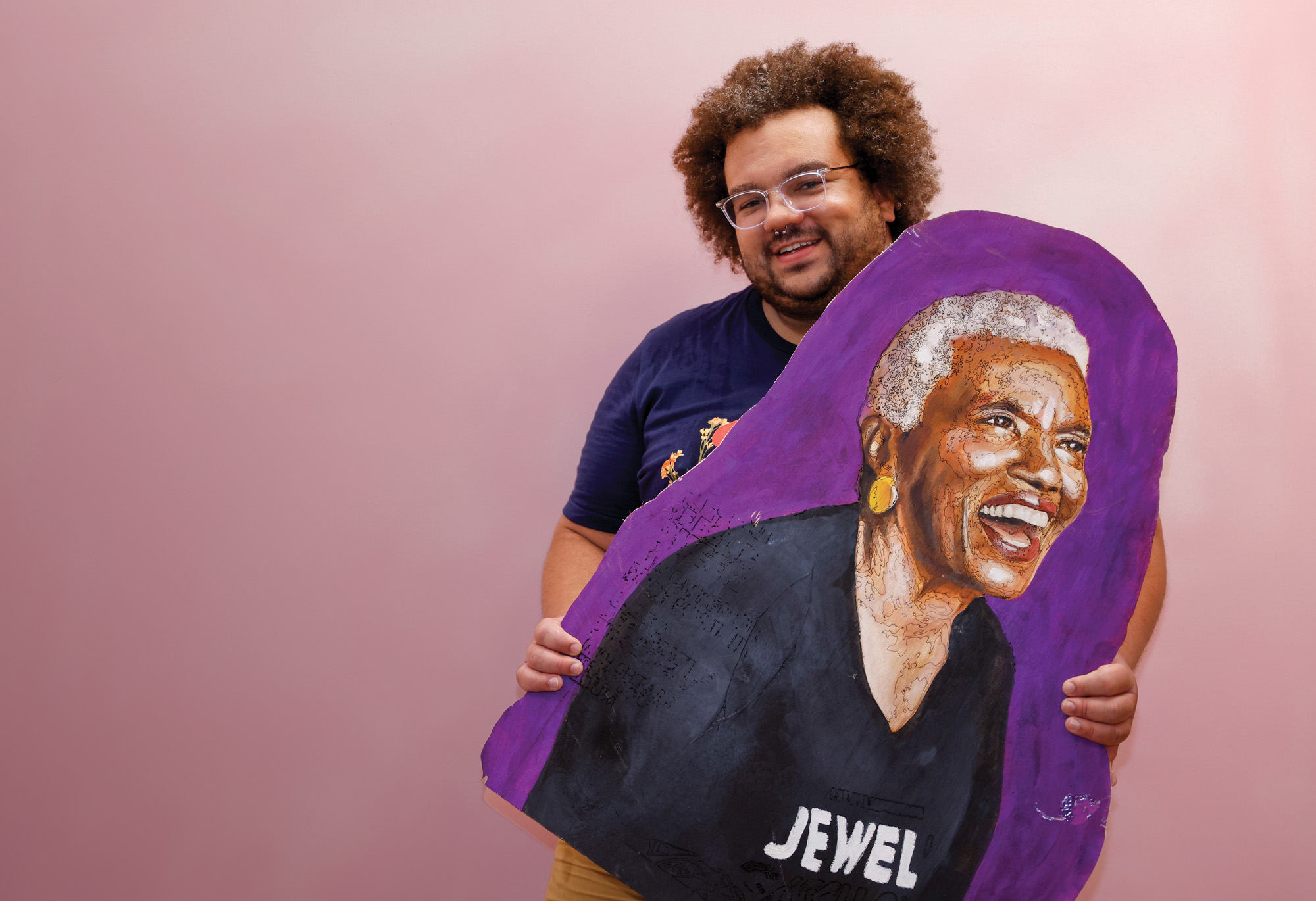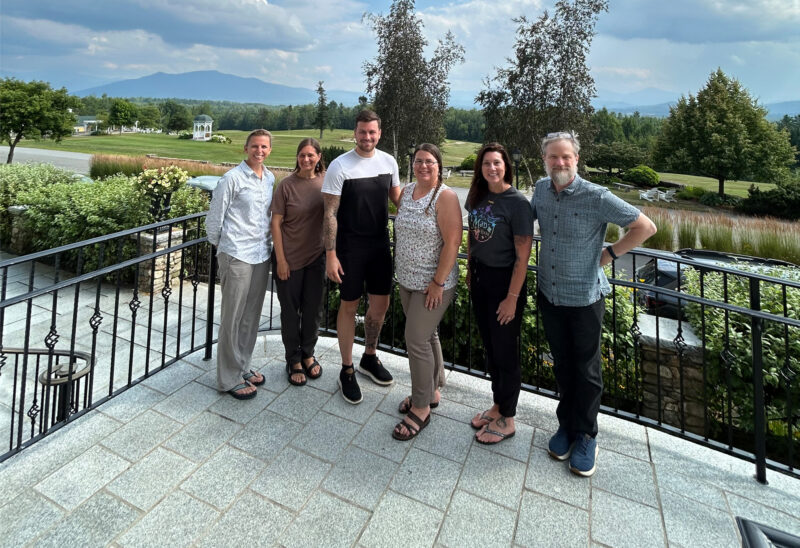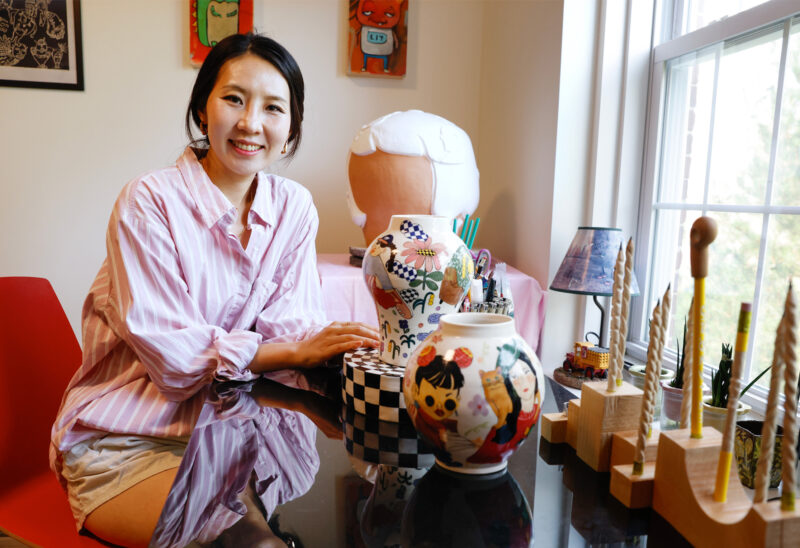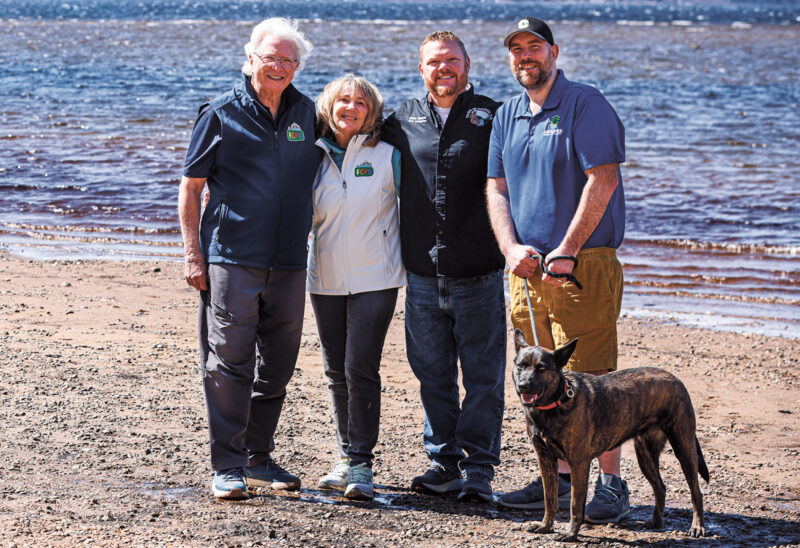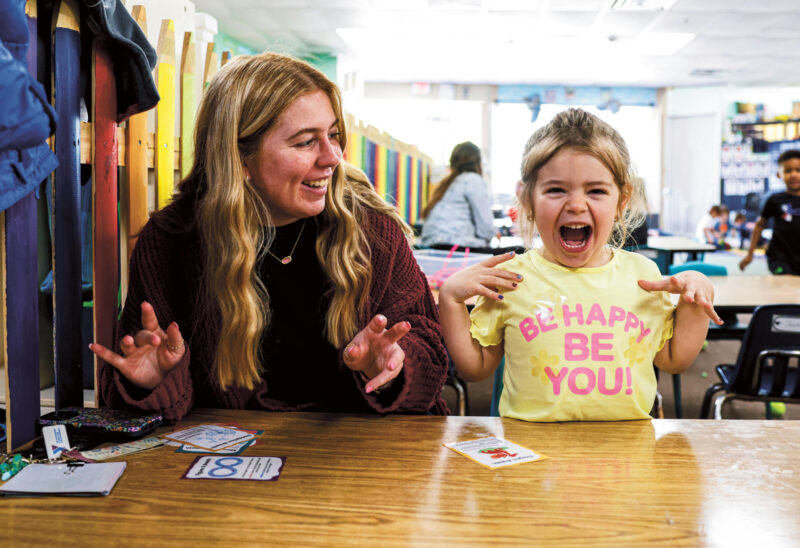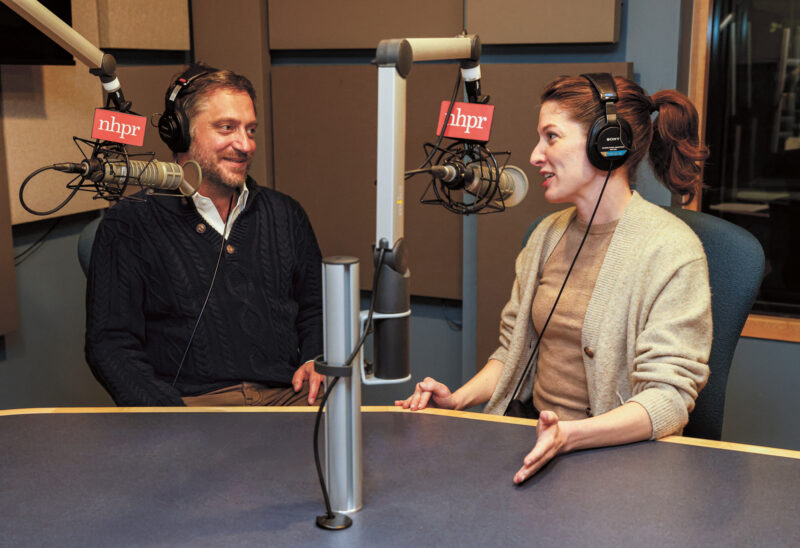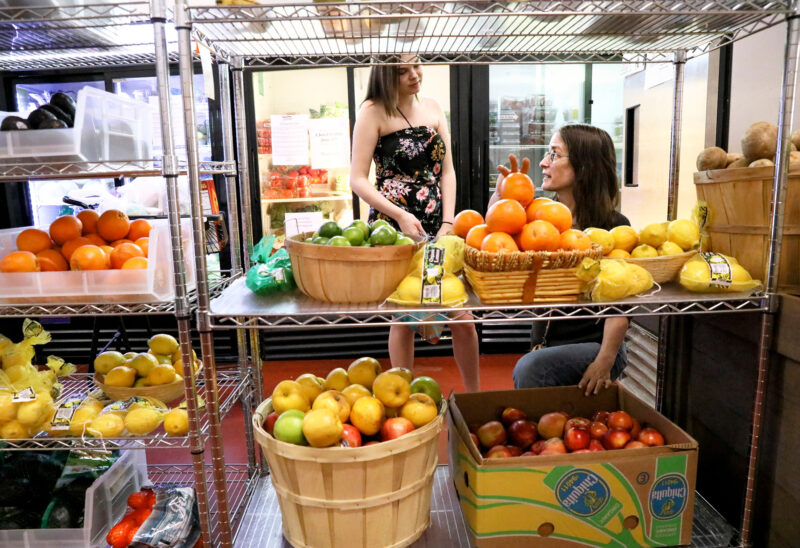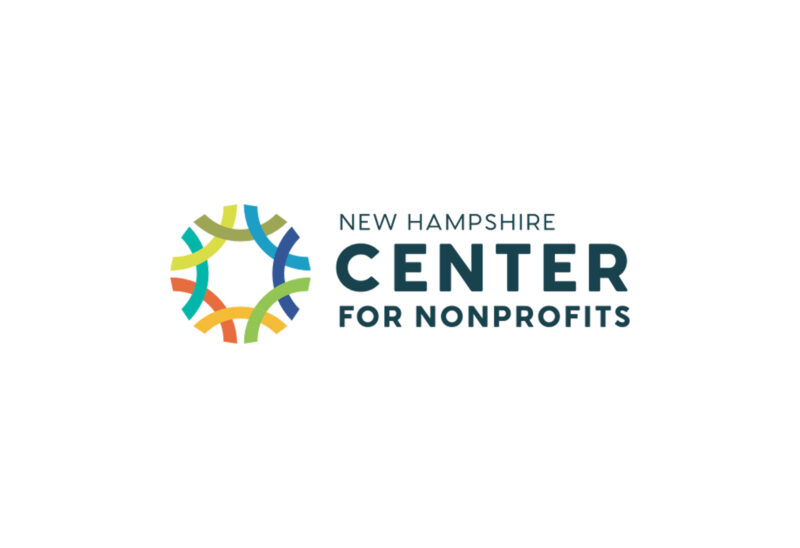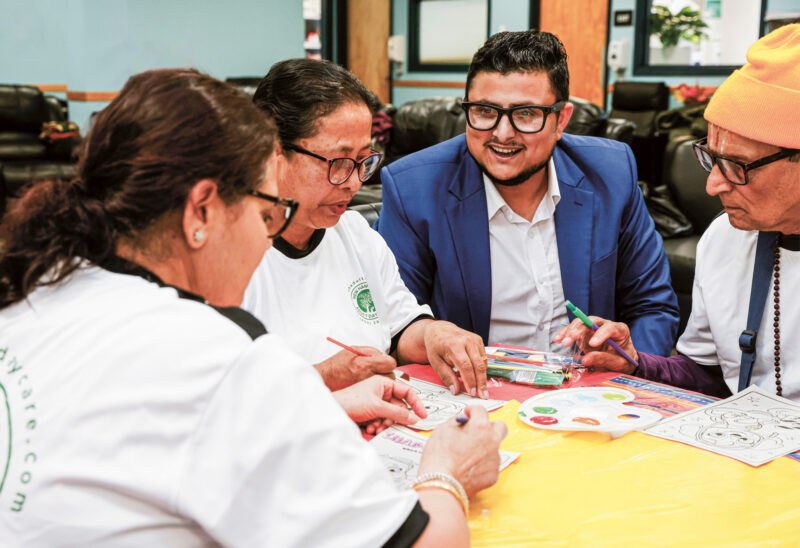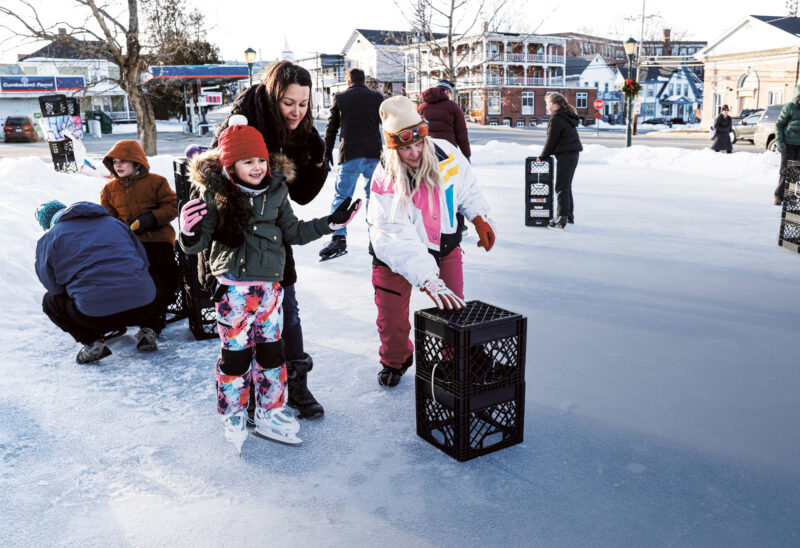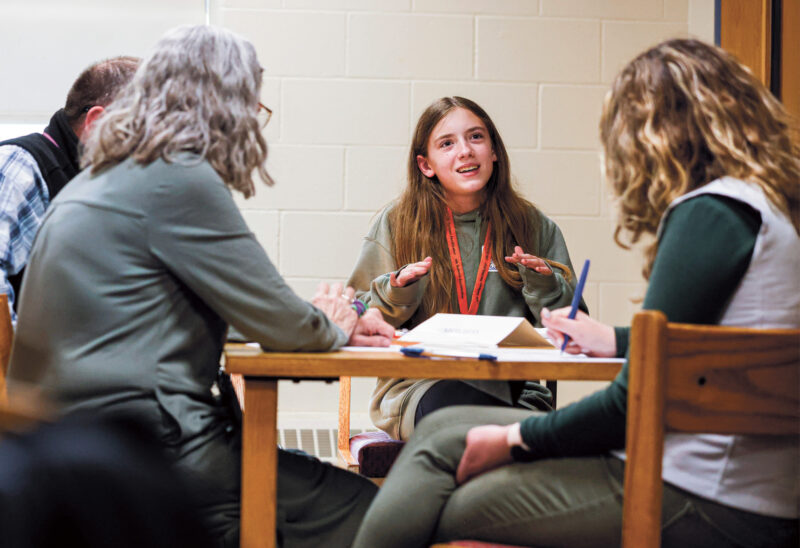For Randall Nielsen, this is the most relevant question about art:
“What does art do for the community?”
If art creates belonging, if it invites people in, if it spreads joy — then it is perfect.
Nielsen is the founder of Queerlective, a nonprofit that is building community with art. The organization hosts gatherings where people make art together, offers leadership-skills training for LGBTQ+ folks, provides professional development for artists — and more. Queerlective is a driving force behind the annual Manchester Pride celebration.
As people entered Veterans’ Park through a rainbow arch at Manchester Pride, they were invited to go on a “queer icon scavenger hunt,” finding paintings and bios amidst the celebration of figures from David Bowie to Marsha P. Johnson and Audre Lord. People picked up cans of spray-paint and added personal touches to giant cutout letters spelling the word
“P R I D E,” and worked together to transform black-and-white mural templates into riotous color.
Queerlective promotes celebration and joy as acts of strength and resistance during a time of increasing measures to roll back LGBTQ+ rights.
“Queerlective really is focused on making Queer and BIPOC joy the norm,” Randall said. “Everything we do is rooted in that joy and rooted in celebration.”
Hazel Heywood is an artist and member of Queerlective. The organization commissioned Hazel to produce a mural for Pride Month events. That commission came at a time when medical bills were mounting and finances were tight. “That saved me from getting evicted,” he said. (That’s just one example of what art can do for community.)
From his booth at Manchester Pride, Hazel looks over at his mural, a black-and-white rendering of a flower garden. People — Black, brown, white, young, old — have taken up paintbrushes to render the lilacs, tulips and daffodils in brilliant shades. Hazel thinks for a beat about how he hopes people feel while making art together.
“I want them to feel like what they are,” he says, “part of a very large whole that is working together to make something beautiful and make the world better.”

